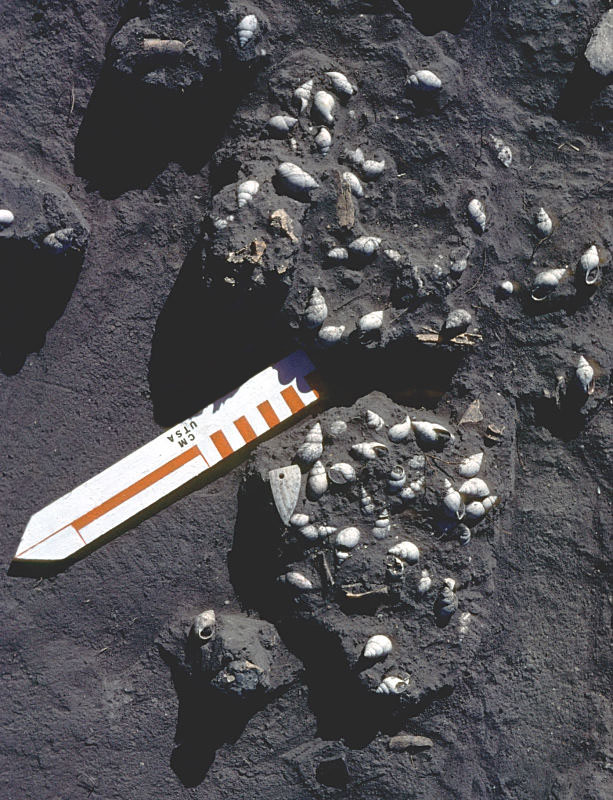
Archeologists have long debated whether snails were eaten or attracted by camp debris, but the latter possibility has been laid to rest by several careful studies. Land snails were obviously a common food item as they occur by the hundreds and thousands in direct association with camping debris at many prehistoric sites. In fact, in unexplored areas of the South Texas Plains, the first clue that archeologists often have that an archeological site exists is spotting land snail concentrations - white specks standing out on bare gray or tan soil. Based on the excavated sample and site area, Black calculated that the Hinojosa site contained well over 200,000 snails. The small clusters, he reasoned, could represent the discarded contents of individual containers have of snail soup. Heat is necessary to release the small invertebrates (the snails) from their protective shells and it is reasonable to suggest that snails were components of soup or stews.